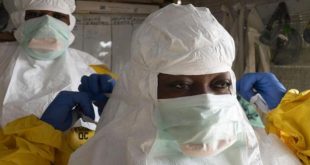
Next steps
Another expert, William A. Haseltine; who is the President of the global health think tank ACCESS Health, also says from what scientists know of the ability of the COVID-19 virus to adapt and thrive through random mutations, there is only one viable option for long-term disease control: a strategy that combines a rapidly growing arsenal of vaccines and antiviral drugs with strong public-health measures and deeper global cooperation.
“No single approach will ever be enough, ” Haseltine said in a syndicated articled titled `How to end the pandemic’.
Eighteen months into this pandemic, he said, the world has what it needs to end the COVID-19 pandemic.
He mentioned vaccines, antivirals, public-health measures, and international cooperation as tools that can help the world eliminate COVID-19 as a life-threatening disease and allow for the dawn of a better life.
According to Madhi, however, “the only sustainable solution is to learn to live with the virus”.
“We are simply going to have to become comfortable with the idea that SARS-CoV-2 is going to be like one of the numerous other viruses that circulate that cause respiratory illness each day,” he says.
“Any notion that COVID-19 was going to last for just a few months was very much misplaced in 2020,” says Prof. Madhi.
He says this became especially clear after it was recognised that the SARS-CoV-2 virus was largely spread through the airborne route. All indications were that it would cause repeat bouts of waves. This is what happened in the flu epidemic of 1918.
In addition very few scientists predicted the the type of mutations that occurred over such a short period of time.
“This has resulted in the virus becoming both more transmissible and more able to evade immune responses,” Madhi said.
The evolution of the virus has been so rapid that the Delta variant, which is currently dominating the world, is at least twice as transmissible as the ancestral virus that was circulating.
“What this means is that herd immunity is no longer a discussion the world should be having. We should start to avoid using that term in the context of SARS-CoV-2, because it’s not going to materialise – or is unlikely to materialise – during our lifetimes,” he said.
He said when politicians and others speak about herd immunity, unfortunately, they are under the misconception that the current tools scientists have got are adequate to eliminate the virus.
“It’s not what we have at hand right now,” Madhi said, “Instead we should be talking about how to live with the virus. The tremendous success that’s materialised with COVID-19 vaccines allows us to do this, without actually getting into the herd immunity threshold”.
Peddling the concept of herd immunity creates a misconception that we are actually going to get to a stage where this virus is going to be eliminated. That’s unlikely to happen. It will continue circulating. And there are a number of dangers in continuing to make people believe it’s possible.
Firstly, it could dent confidence in vaccines. Even if targeted populations are vaccinated – as set out by the departments of Health – there will still be outbreaks of COVID-19. The result will be that people begin to doubt the benefits of being vaccinated. Also, for the now dominant Delta variant, immunity against infection (not only COVID-19 illness) would need to be closer to 84% for the “herd immunity” threshold to be reached.
Secondly, failing to face up to the reality that herd immunity can’t be achieved will mean that countries will continue to believe that ongoing lockdown restrictions will get them herd immunity. Instead, that will compromise the lives of people on multiple fronts – including education and livelihoods.
Hopefully, Madhi says, future COVID-19 infections could be mild and cause less severe forms of the disease.
He says this will require ensuring that we get the majority of individuals, especially adults, and particularly those at a higher risk of developing severe COVID-19 and dying, vaccinated as quickly as possible. But the goal would not be to achieve herd immunity. The goal will be to enable people to get back to a relatively normal lifestyle even with the virus continuing to circulate and causing the occasional outbreak. This would also ensure a threshold that guaranteed that healthcare systems of countries are going to be overwhelmed and that people were not going to die in large numbers.
“So people will, unfortunately, continue dying of COVID-19, but certainly not at the magnitude that’s been seen over the past 18 months,” he says in an article published in the online journal; the conversation.
He uses his native South Africa, with a population of about 60 million people, as an example and says, in his view, this scenario could be achieved with only 20 million people vaccinated – and not the 40 million target set by the government for herd immunity. But the 20 million would need to include 90% of people above the age of 60, and 90% of people above the age of 35 who have co-morbidities.
If South Africa achieved this milestone, it could get back to a relatively normal lifestyle, he says. According to him, a major advance would be for COVID-19 to be no more severe than what is seen every influenza season in South Africa with 10,000 to 11,000 deaths.
“The UK experience is where we should be heading,” he says, “That is getting back to a relatively normal lifestyle, provided that we’ve got an adequate number of people vaccinated, and particularly people who are at higher risk of developing severe COVID-19.”
Britain ended coronavirus lockdown restrictions on July 19, a day now called Freedom Day. All COVID-19 social restrictions, including mask wearing and maintaining social distancing, were removed.
By early August, the UK was close to 85% of adults having already received at least a single dose of the vaccine. As a result they are able to remove almost all restrictions.
The all-important Covid R number dropped to between 0.8 and 1.1 in England for the first time since May, new data showed.
Scientists use the “R number” as a term to refer to a disease’s ability to spread and is the number of people that one infected person, on average, will pass on a virus to.
When the R rate drops below 1 this means that the virus could be in retreat and shrinking. Public Health England data released on Friday suggested that the number could be below 1 in England, implying cases might no longer be growing exponentially.
The UK is seeing an increase in number of cases of the Delta variant. But they’ve seen very nominal changes when it comes to hospitalisation and death. The vast majority of people (97%) who still end up being hospitalised and dying of COVID-19 in the UK are those who decided not to be vaccinated.
****
 The Independent Uganda: You get the Truth we Pay the Price
The Independent Uganda: You get the Truth we Pay the Price


